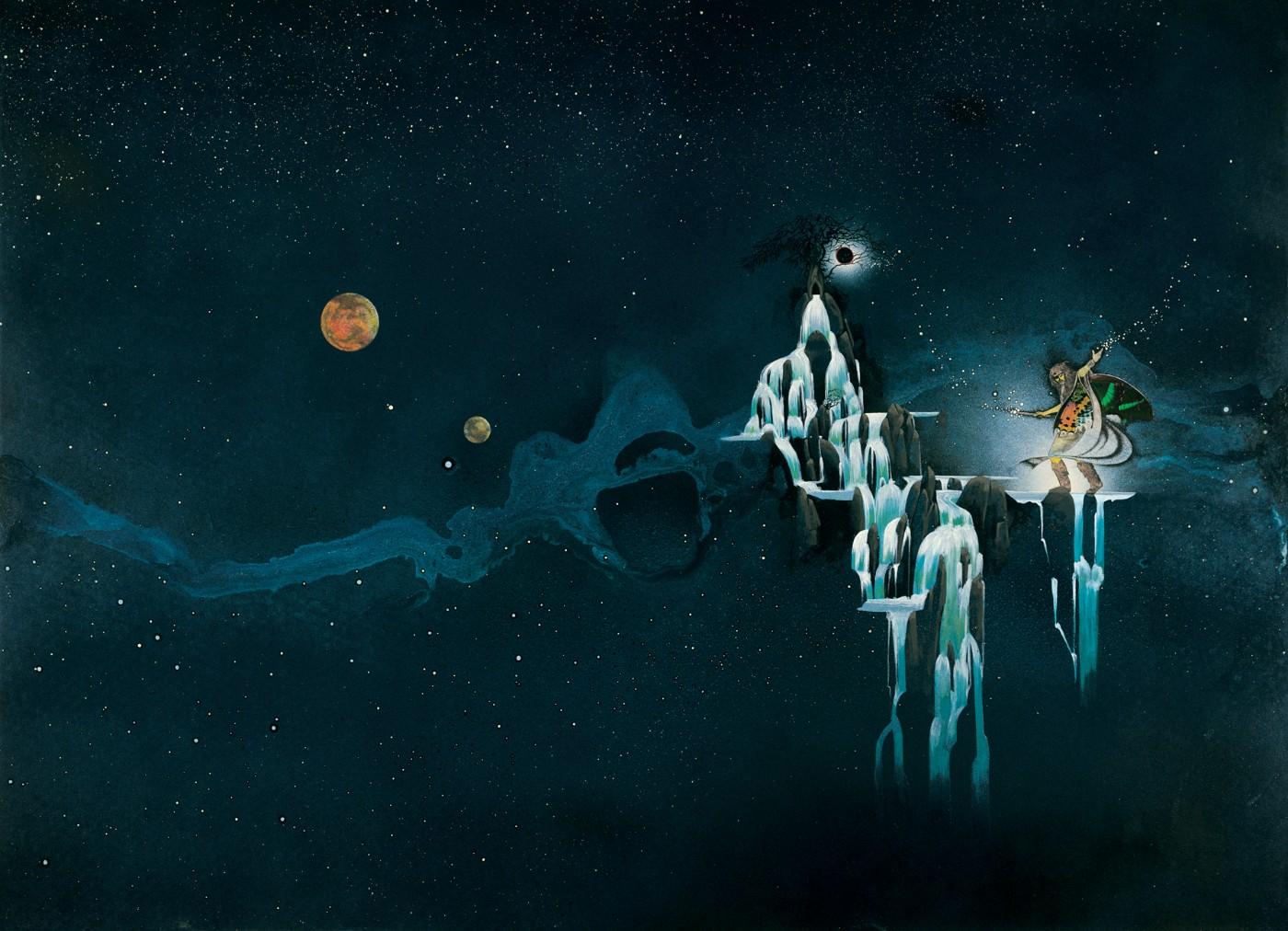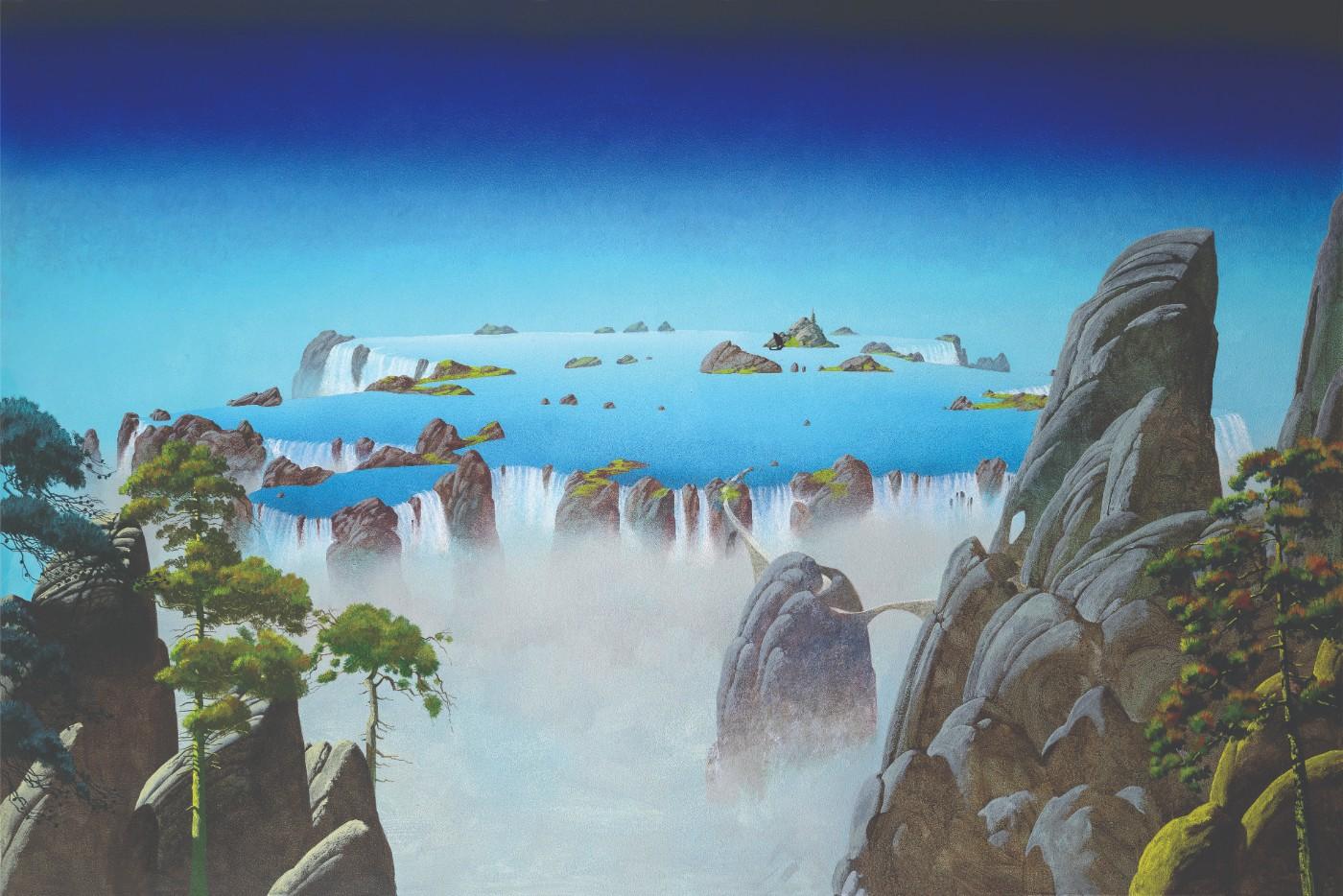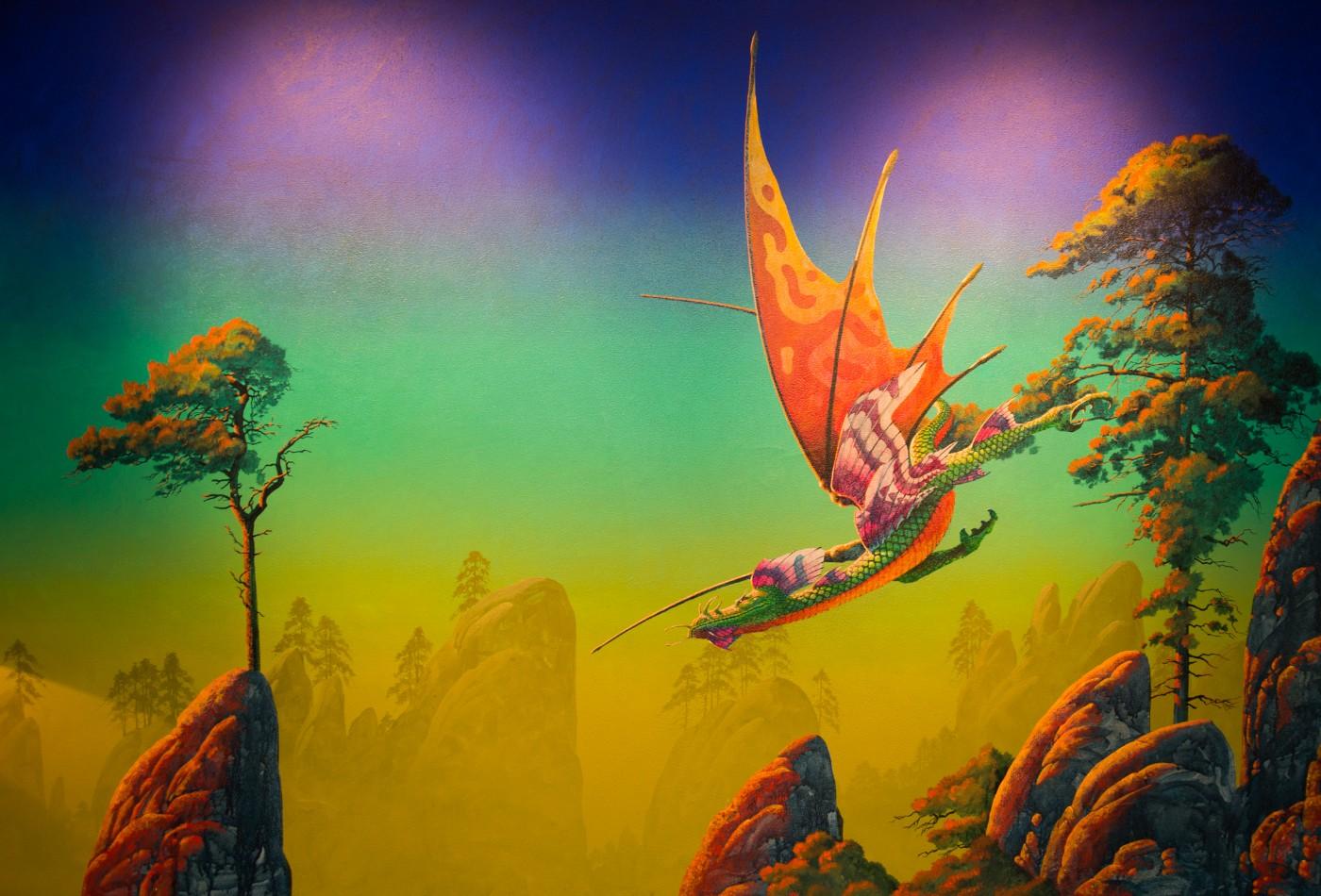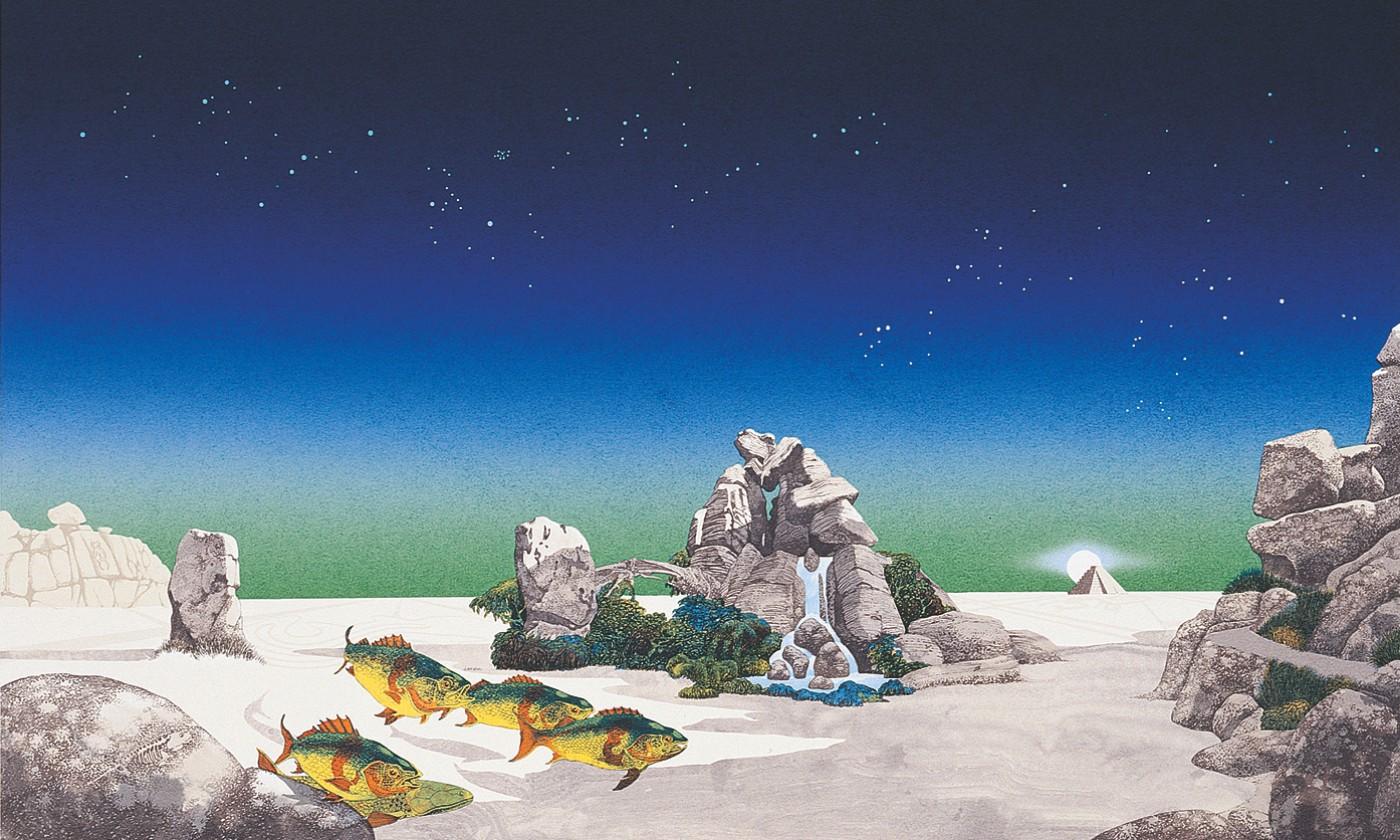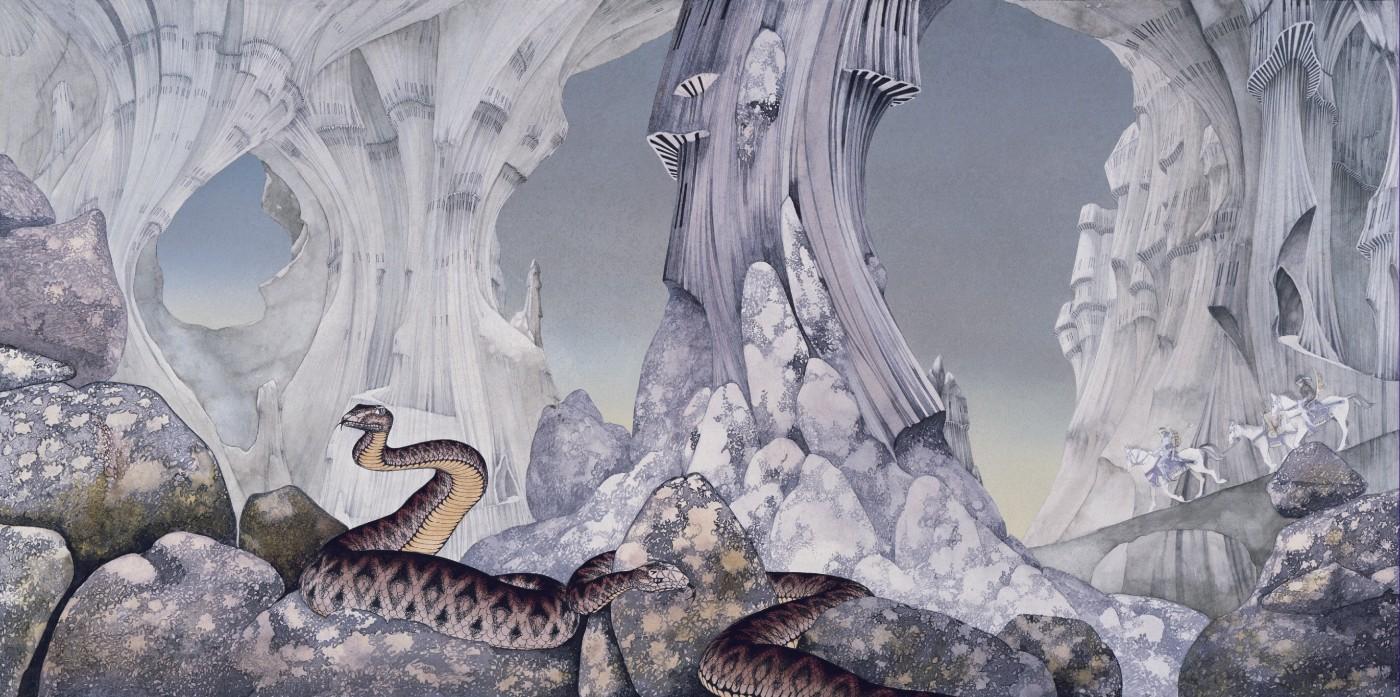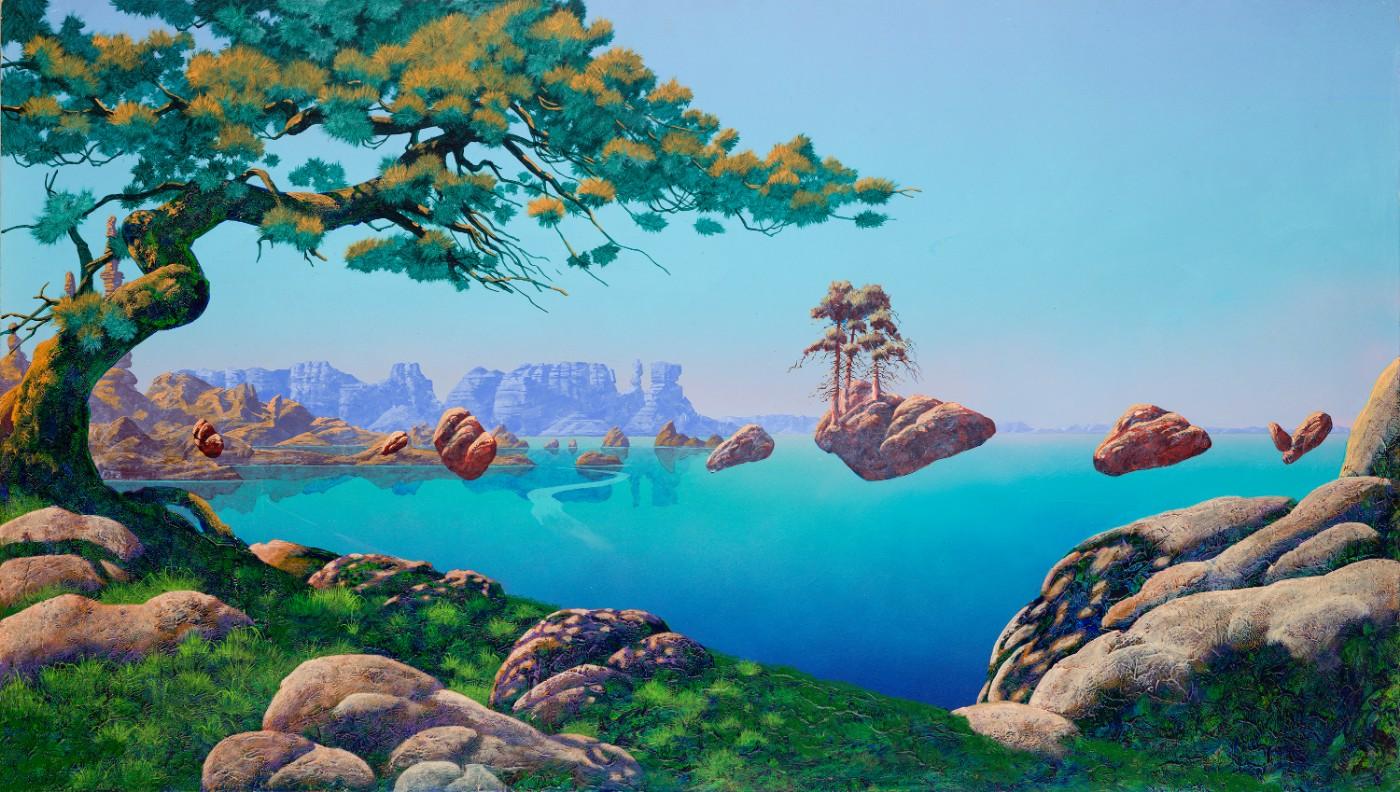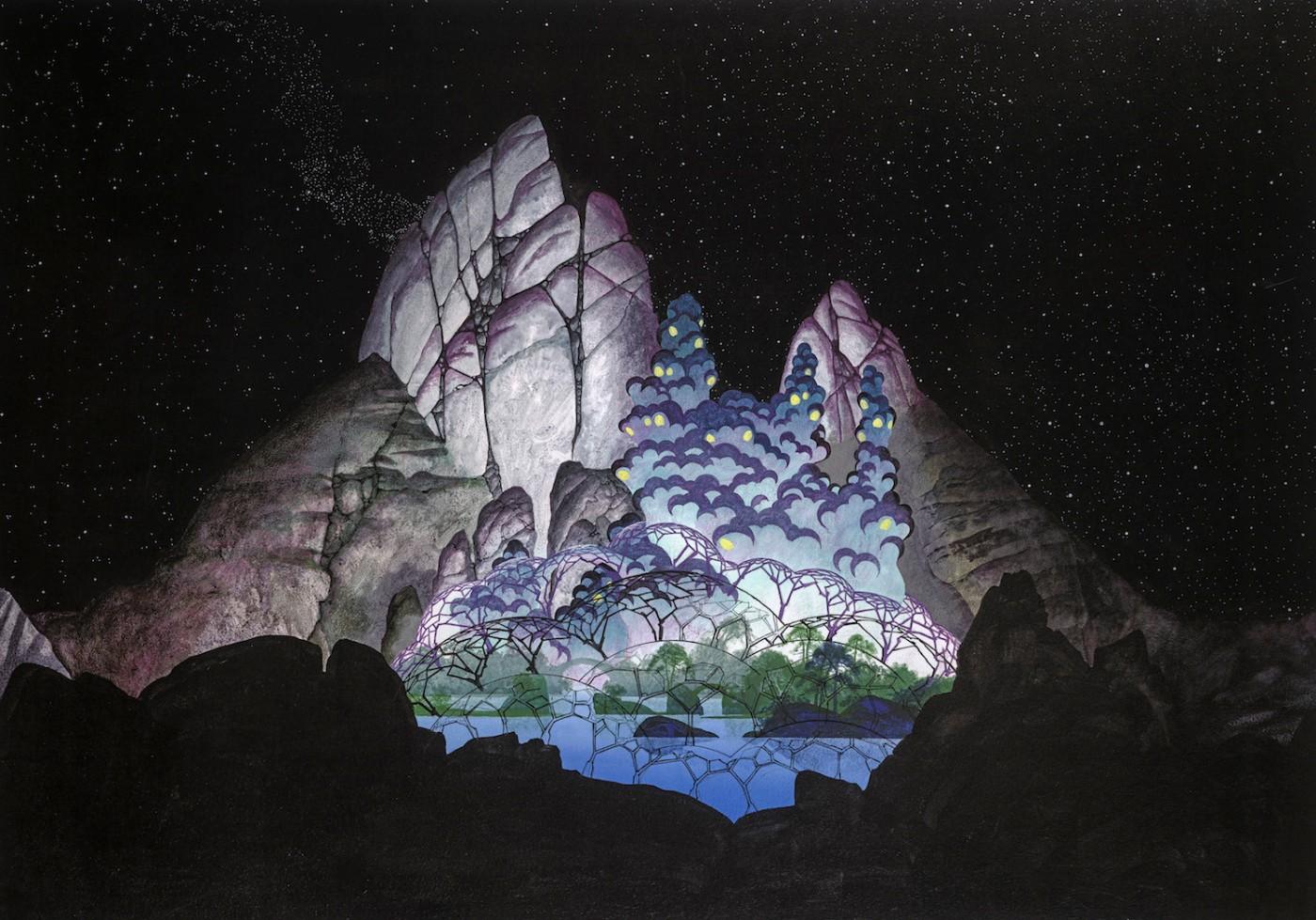Famous for his album covers for the band “Yes” and its progeny, “Asia,” Dean’s two-year stint in Hong Kong as a child absorbing Chinese landscape paintings and drawings is visible in acrylic on linen compositions like “Close to the Edge,” which appeared in the foldout of “Yes”’s 1972 album of the same name.
“Tales From Topographic Oceans’ and ‘Relayer’ were probably about twenty-seven inches wide,” he tells Art & Object about his work for the band’s two subsequent albums. “I did ‘Pathways’ for the triple album, that was quite a lot bigger. And from there they got bigger and bigger. I would say to people if you've never seen them in the flesh, you have no idea about the impact of the scale. So, it’s definitely worth a visit.”
Dean grew up mainly in England, Greece, Cyprus and, in the 1960s, attended Canterbury College of Art followed by Royal College of Art in London, where he studied design. He first collaborated with “Yes” in 1971. “I welcomed their input. But I also welcomed the fact that they trusted me to do a good job and just let me get on with it. So, there was no micromanaging but there were discussions,” he says about working with the band. “It’s been a big part of my life for fifty years, and that was a big surprise. I never really treated it as a mainstream professional effort. It just kind of dawned on me, this is what you’ve been doing for a very long time. There's no way of getting around it, this is what you do. So, it was kind of a surprise.”




